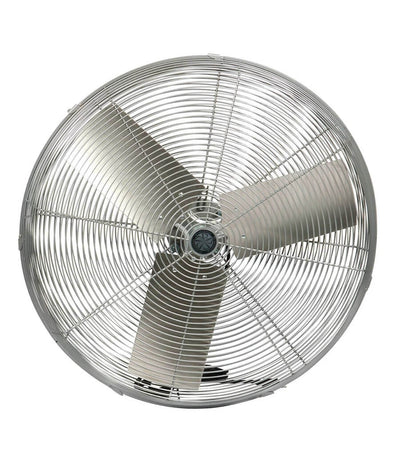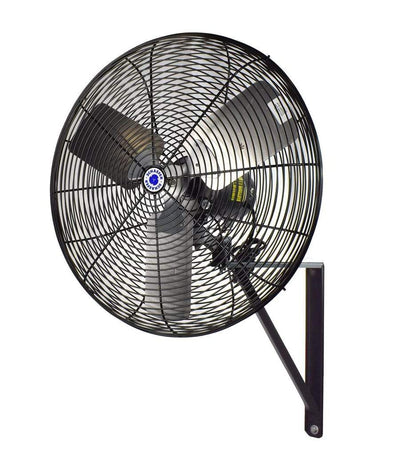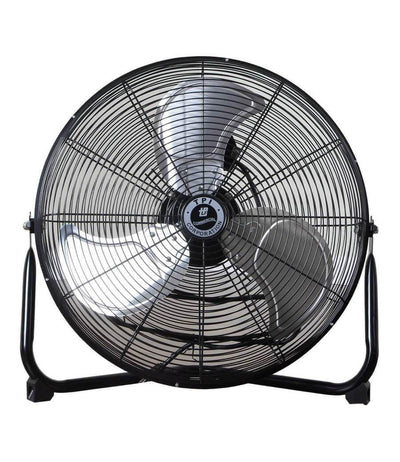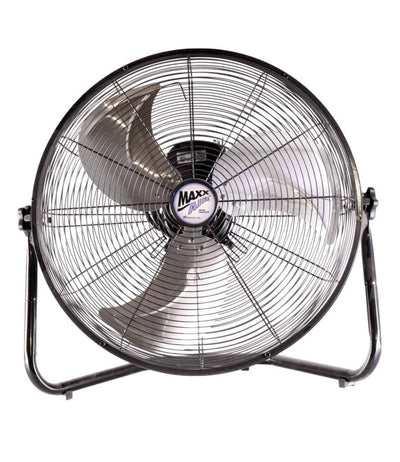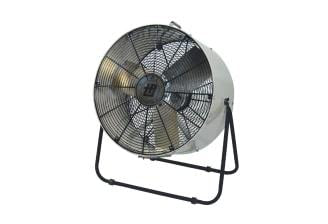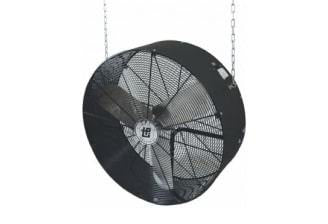Fans and blowers are commonly seen in homes, schools, offices, garages, and almost all sorts of industries. They’re often thought to be the same device since they both circulate air, but they do have distinct features and functions that separate one from the other.
This article will tackle fans and blowers and their common and distinct features. We will also discuss some of their general types, designs, and modern features that most buyers today are looking for. Read on to see for yourself which type of fan or blower suits your needs best.
What are Fans and Blowers?
In a general sense, fans and blowers can be defined as electro-mechanical air-moving devices that work with a low, moderate, or high pressure. They come in several different types, and each type has its own characteristics and suitable applications.
Fans and blowers come with several similarities. Their primary difference, however, is in their airflow method and pressure ratio (discharge pressure over the suction pressure). As established by the American Society of Mechanical Engineers, fans have a pressure ratio of up to 1.11 while blowers have 1.11 up to 1.20.
Fans are open devices, except, of course, for their steel or plastic housings that protect the fan blades from damage and users from the blades. They circulate air throughout a broad space, at a range that depends on their specific airflow capacity and blade revolution per minute. The general rule is that a fan that produces lower flow uses higher pressure while one with higher flow uses lower pressure.
On the other hand, blowers or blower fans have housings or circular hubs that allow them to focus air towards a certain direction. These housings also enable blowers to use higher pressure.
General Types of Fans
While both fans and blowers make great options, it’s important to understand them better so you can wisely choose between the two. Fans can be grouped into two general types: axial and centrifugal fans.

1. Axial Fans
Axial fans are the oldest types of fans. Their design dates back to AD 500, when Persians made the earliest windmills. The very first electric fans were also axial, and so are most modern fans we know today.
As their name reveals, axial fans move air through their blades that follow a fixed axis. When they’re operational, the rotating blades draw the air in parallel to this axis. Then, the blades blow the captured air, out to to the opposite yet also parallel direction.
Axial fans generally move a larger volume of air than centrifugal fans. They produce low-pressure airflow at a high operating speed but with low power. They are also lighter and less expensive than other fans and blowers.
The general types of axial fans include tube axial fans, vane axial fans, and propeller fans.
2. Centrifugal Fans
Instead of blades moving around an axis, centrifugal fans capture air through openings--usually on the sides or back part of a device--then blow it out through a duct. These types of fans move less volume of air, but the flow is steadier compared with what axial fans produce.
Typically used with ductwork, centrifugal fans produce high-pressure airflow, which is ideal for cooling, heating, and drying applications. Air-handling units, for example, are built with a centrifugal fan. These types of fans also consume more power to operate, but they are generally more energy-efficient and more damage-resistant than axial fans.
They can be further subclassified into three types: radial fans, forward-curved fans, and backward-inclined fans.
Common Designs of Fans
Fans are some of the best ventilation devices designed for residential, commercial, and industrial applications. Their parts typically include a motor and motor housing, blades and blade housing, cord and plug, a pull switch, and remote control. Fans are considerably less expensive compared with other HVAC devices, which is why they’re usually the first options of many homes and businesses.
When choosing a fan, buyers usually start by deciding what type of installation works for them. They can choose between ceiling or wall-mounted fans, pedestal fans, and portable fans. Due to the demand of most buyers, fan manufacturers now put a lot of effort not only in engineering their fans to be highly functional but also in ensuring that they are aesthetically pleasing.
1. Ceiling Fans
Commonly used in living rooms and offices, ceiling fans are some of the most reliable and decorative fans available. What’s more, some ceiling fans are built with a light fixture to provide dual function in a single device.
Ceiling fans can operate at low and high speed, but not as quickly as the rotation of other types of fans. This is to avoid disrupting normal activities, like handling papers or any other lightweight materials that are easily affected by wind-movement.
These devices work by pushing air downward to produce a wind-chill effect, which is great during hot days. To make them also suitable for cold days, some manufacturers design ceiling fans with a reverse circulation setting. This enables the fan to pull air upward instead of downward, thereby forcing cool air away and displacing warm air toward the fan’s vicinity. Note, however, that not all ceiling fans have this feature. If this is something that you want for your device, be sure to check with a manufacturer or supplier before finalizing your purchase.
These types of fans are generally easy to install and safe to use--just be sure that there’s sufficient clearance from the floor and the ceiling. At least 8 inches is the recommended clearance between a fan and the ceiling, while at least 7 feet is recommended between a fan and the floor.
2. Wall-mounted Fans
Want to install a fan but you have very limited space? A wall-mounted fan may be the most suitable for you. This type of fan is great for any room--there are units for residential areas and others for commercial and industrial use. They’re also perfect for places where pedestal fans are hazardous, like classrooms for preschool and elementary-level children.
Wall-mounted fans come in stationary and oscillating models. If you need a fan to ventilate a broad space, an oscillating type can do it. These fans are easy to install. Plus, because they aren’t as far up as ceiling fans, they are also easier to clean and maintain.
3. Pedestal Fans
The most significant advantage of pedestal or floor fans is their portable quality. Even industrial models are relatively easy to move, making them ideal for places that need ventilation in different areas at different times. Also, most pedestal fans are oscillating units, so just one device can already reach an ample space.
Pedestal fans come in a variety of sizes. Aside from the usual big ones, there are now much smaller desk models that anyone can easily use, lift, and move without any problem.
General Types of Blowers
As its name reveals, blowers blow air. They move air as fans do, but with greater force and higher pressure. They are built with high-speed impellers that increase the velocity of air, and their blades’ kinetic energy increases the pressure as air is blown.
There are several blade designs used in different blowers, and each design results in a distinct way of propelling air outward. These blade designs include forward-curved, backward-inclined, backward-curved, radial-tip, and airfoil fan blades. As for the general types of blowers, centrifugal and positive displacement blowers are the most common.
1. Centrifugal Blowers
Like centrifugal fans, centrifugal blowers are ideal for different ventilation systems. Their impellers boost both the speed and volume of air, which naturally gives the air strong kinetic energy. They are great for providing continual airflow or gas transfer. In fact, this type of blower is commonly used today in aquaculture aeration, air conditioning equipment, industrial vacuum systems, as well as in artificial lungs.
Centrifugal blowers come as single-stage or multi-stage units. The former type provides uniform airflow throughout while the latter provides varying levels of airflow while operating at a constant level of pressure.
2. Positive Displacement Blowers
Positive displacement blowers take advantage of positive displacement technology. What this means is that these blowers maintain a constant flow regardless of the system pressure. They work with two impellers--also called rotors--that rotate at the same speed to draw in air. Unlike centrifugal blowers that change the volume of air, these blowers do not--rather, they trap the air from one end of the machine then release it through the other.
Some applications of positive displacement blowers are aquaculture aeration, gas boosting, and material vacuuming, to name a few.
Common Designs of Blowers
Blowers also come in different designs, including those that produce combustion air and are used to blow leaves or clean gutters. However, in this part of this article, we will focus on the designs used to enhance room ventilation: the blower fans.
Blower fans are used in various settings, like gyms, garages, factories, and warehouses. Like ordinary fans, they can be used as supporting units that help spread cooled or heated air from a heater or an air conditioning unit. Most industries choose blowers that can be bolted to a wall or ceiling, those that can be suspended, and those that come with stands. Most blower fans remain highly functional even when used in dusty environments, which makes them great investments that require little maintenance for industrial use.
1. Yoke-Style Blowers
Yoke-style blowers can be bolted on a wall or ceiling. Like wall-mounted and ceiling fans, these blowers are great for areas with limited floor space. Also, because they blow air with greater force, they are also great for spacious areas that need better ventilation than what ordinary fans can provide.
Most yoke-style blowers, like those made by TPI, come with a pull chain switch that allows users to easily set the device at either a high or low-speed setting. Their motors are also totally enclosed to protect them from dust that can disrupt proper functioning.
2. Suspension Blowers
One of the best options for large areas is suspension blowers. Made specifically for heavy-duty industrial use, these blowers are designed to have high-velocity profiles that allow them to reach a wide space from a strategic location. Users can suspend them from a place where the blowers’ maximum benefits can be felt, and these fans have a several-feet-long cord for convenience purposes. Like other blower fans, suspension blowers can be set at a high or low-speed setting. TPI suspension blowers, for instance, have an on/off rocker switch that allows this.
3. Standing/Portable Blowers
Yes, you can have the high-velocity air you need anywhere at any time with the use of standing or portable blowers. These blowers are perfect for garages and other settings with different rooms needing better ventilation at different times. Also, because most blowers are significantly heavier than ordinary fans, some units come with swivel caster wheels that allow users to move the blowers with ease. Because of their portable quality, standing blowers are suitable for both indoor and outdoor use.
Modern Features Buyers Are Looking For
Based on recent surveys and reviews, it appears that the majority of the features that buyers look for in fans and blower fans have stayed relatively similar over the years. These features, among others, include ease of installation, diverse speed settings, and a long estimated device service life. An adjustable stand is also a common preference when it comes to pedestal fans.

For residential and commercial fans and blowers, people generally prefer options that give aesthetic value while providing reliable functionality.
Additionally, people also want additional comfort features for fans that they'll use in areas where they want to rest, like their bedrooms. The image below summarizes some fan features that people look for in bedroom fans:

When it comes to industrial use, the common direction is to choose units with higher airflow capacity with minimal consideration of their appearance.
Of course, safety features are always important to buyers. Fans and blower fans normally have overheat protection features and easy-to-access controls by which users can easily shut off a device when there’s any problem with it, the circuit, or the electricity lines. However, because electrical issues can cause serious damages, buyers usually opt to buy from brands that they already trust over those that have attractive safety claims but have not yet gained the public’s trust.
This is the primary reason why familiar names like TPI have stayed popular in the industry. Despite new manufacturers rising from here and there, buyers generally go for names that have built a good reputation and are therefore reliable in terms of both device functionality and safety.
Fans and blowers can be great investments if you choose the ones that suit your needs and preferences. As you explore your choices, feel free to review this guide.














